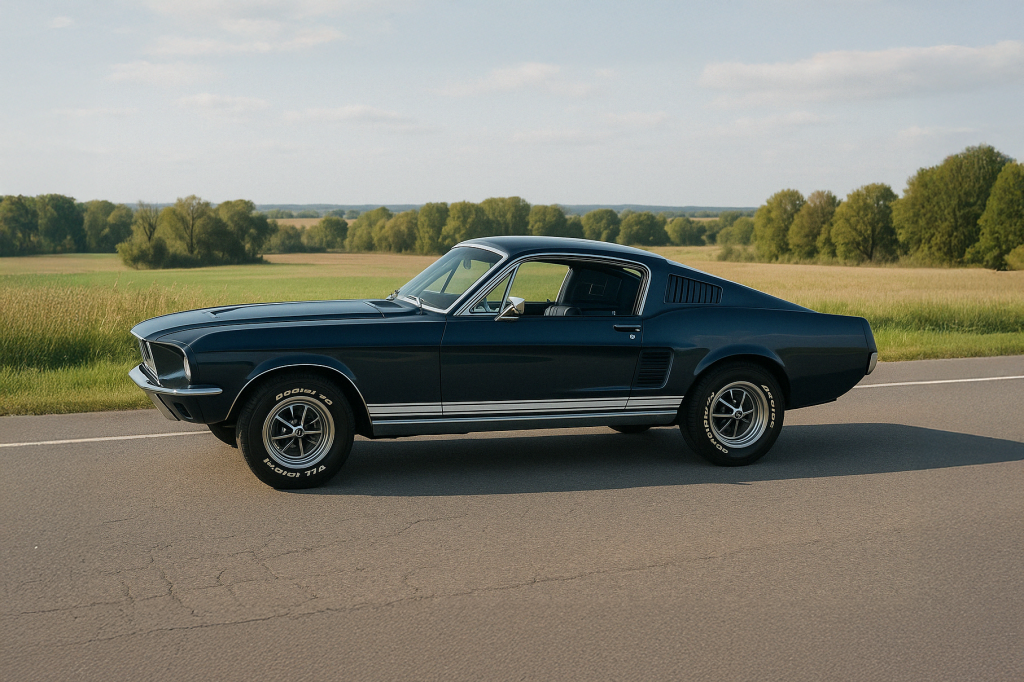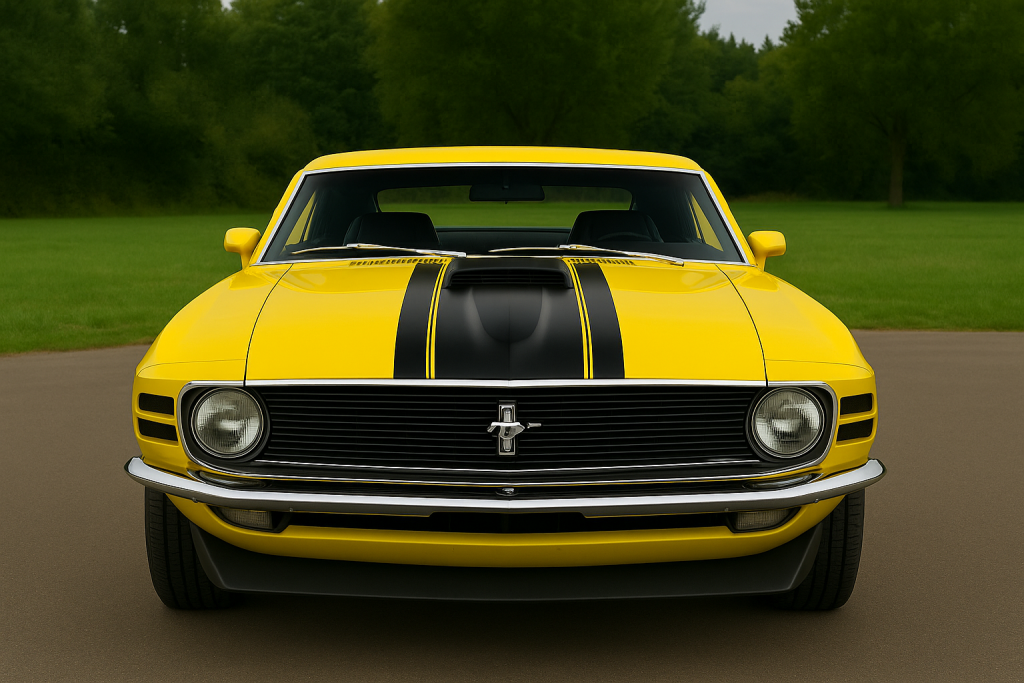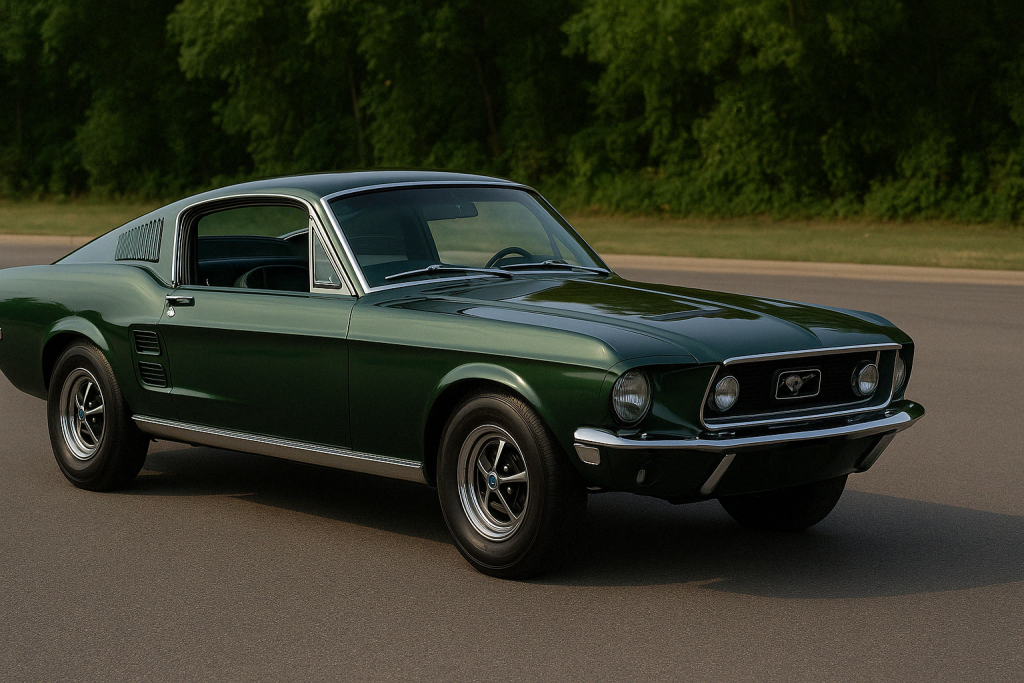There are classic cars, and then there are legends. The 1970 Boss 302 Mustang fits solidly in the second category. Built by Ford to meet Trans-Am racing homologation rules, this beast was never just about looking good in your driveway—it was made to dominate the track and turn every street into a slice of motorsport history.
If you’re a fan of muscle cars, the 1970 Ford Mustang Boss 302 is one of those rare models that checks every box: performance, pedigree, and unmistakable style.
Born to Race, Built for the Streets
By 1970, the Ford Mustang had already solidified itself as the quintessential pony car, but Ford wasn’t content with cruising. They wanted to win. Specifically, they wanted to win in the SCCA Trans-Am racing series, where manufacturers duked it out with tightly wound machines limited to 5.0-liter engines. That’s where the Boss 302 came in.
To qualify, Ford had to build production models—and what a happy requirement that turned out to be. The 1970 Boss 302 wasn’t just a race car with license plates; it was a muscle car that brought track-ready handling and high-revving performance to the masses.
The Heart of the Boss: A High-Revving Small Block
At the core of the Boss 302 Mustang was a specially engineered 302 cubic-inch V8 that blended components from both the Windsor and Cleveland engine families. This unique setup gave it free-breathing heads, solid lifters, and the ability to rev all the way up to 6,200 RPM with ease.
The engine officially produced 290 horsepower—but anyone who’s driven one will tell you that number was sandbagged for insurance purposes. In reality, the output felt closer to 350 horses, thanks in part to a Holley 780 CFM four-barrel carburetor and an aggressive cam profile that roared with attitude at every red light.
Paired with a 4-speed manual transmission, the Boss 302 wasn’t built for idling in traffic—it wanted to run, and when you let it loose, it absolutely sang.
A Mustang That Handles?
One of the biggest surprises for those unfamiliar with the Boss 302 is how well it handles. Most muscle cars of the era were known for going fast in a straight line, but the Boss 302 took a different route. Ford engineered this car with competition in mind, which meant tighter suspension, a front sway bar, and staggered rear shocks that actually gave it grip in the corners.
This wasn’t your average drag strip machine—it was something much more refined. Whether you were carving back roads or tackling road courses, the 1970 Ford Mustang Boss 302 made you feel like a race car driver.
Exterior Styling: All Business, No Fluff
The 1970 model year was the last for the Boss 302, and many fans consider it the best-looking version. The body received subtle tweaks from the ’69 model, including a revised front grille, sportier striping options, and functional hood scoops.
Flat-black accents on the hood, rear deck spoiler, and rear window louvers added to the aggressive, all-business aesthetic. And of course, the “Boss 302” callouts on the fenders let everyone know exactly what you were driving—even if they only caught a glimpse of your tail lights disappearing down the road.
Colors like Grabber Orange, Grabber Green, and Competition Yellow gave this car a vibrant presence that made it pop, even parked next to other iconic muscle cars of the era.
On the Track and in the Streets
Though the 1970 Boss 302 was street-legal, its DNA came straight from the racetrack. It was designed to compete head-to-head with cars like the Chevrolet Camaro Z/28 in Trans-Am racing—and it did just that.
Behind the wheel, drivers felt every ounce of the car’s purpose. Tight turns, high-speed bursts, and mechanical grip made this classic car feel more like a purpose-built race car than a daily cruiser. But the amazing thing is—it could still be your daily cruiser. That’s the magic of this Mustang.
A Collectible with True Grit
Today, the 1970 Boss 302 is one of the most sought-after Classic Cars in the collector world. Its combination of rarity, performance, and historic significance makes it a gem in any garage.
Prices for authentic models have skyrocketed, especially for well-preserved or fully restored examples with matching numbers and factory-original paint. And yet, what makes the Boss 302 special isn’t just its market value—it’s the experience behind the wheel. Few Race Cars from its era manage to be both visceral and refined.
Final Thoughts
If you’re lucky enough to own or even drive a 1970 Boss 302 Mustang, you’re experiencing a piece of automotive history that’s as thrilling today as it was over 50 years ago. It was the kind of muscle car that changed people’s expectations—not just of Mustangs, but of what a true performance pony car could be.
From its aggressive looks to its high-revving powerplant and dialed-in handling, the Boss 302 is more than just a Ford Mustang—it’s a statement. A bold, roaring, tire-scorching statement that still echoes through the car world to this day.



